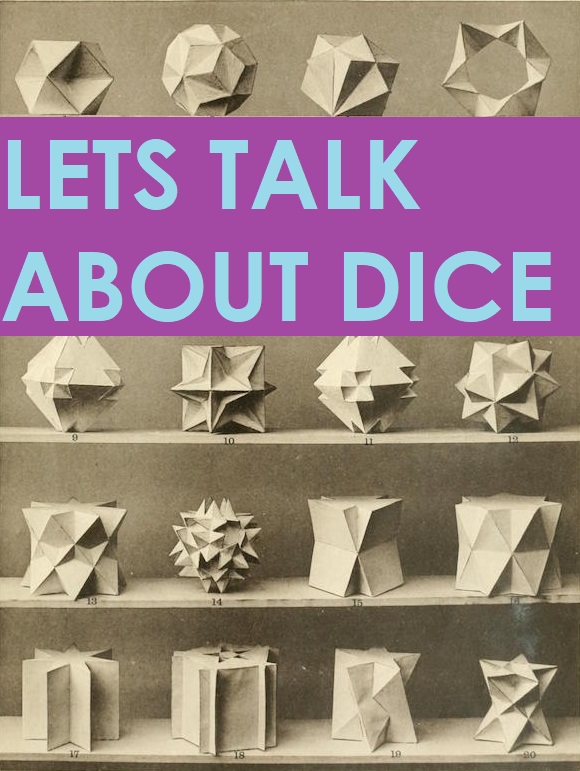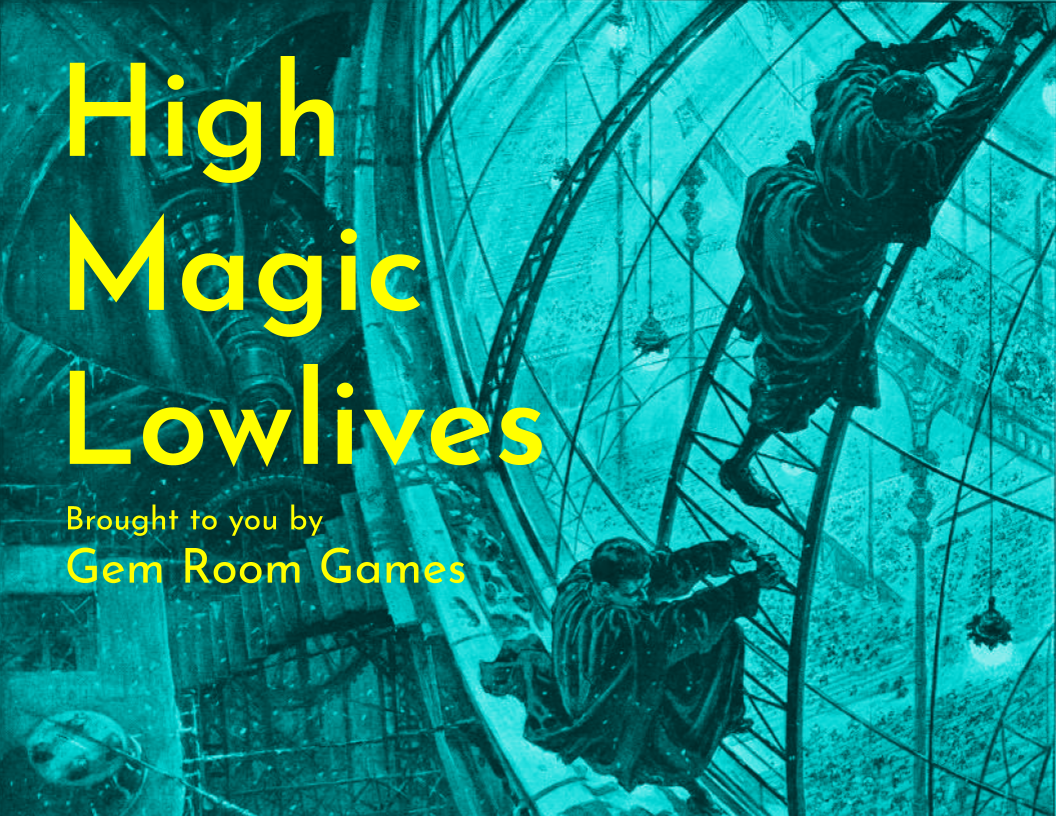Lets Talk About Dice

The resolution mechanic for High Magic Lowlives is modeled after World of Dungeons and Blades in the Dark, both written by John Harper. I really like this system: it’s clean, open, and drives the action forward with plenty of opportunity for the table to get their hands on the action. In essence it goes like this:
- The player describes what they want to do, and what attributes and/or equipment they’re using to do it.
- The GM weighs this against the established fiction and what they’ve kept hidden about the situation. They tell the player broadly how effective and risky this course of action will be.
- There’s a chance to exchange a resource (stress, whatever) or for an ally to assist to improve your odds. Helping hands share in the consequences.
- Dice are rolled. The action either fails or succeeds (as determined by effectiveness) and the player may or may not suffer consequences (the severity of which are determined by the established risk).
- There’s a chance to exchange the same resource in step 3 to mitigate the consequences suffered.
High Magic Lowlives doesn’t work EXACTLY like this (mostly because it doesn’t have a stress mechanic baked in, maybe it should?) but the main things I like about how this works is that the GM can throttle difficulty by breaking a task into multiple rolls (you have to pierce the armor before you can do damage) and altering how rough a bad roll is going to go for you (you’ll take damage, you’ll be exposed to attack, you’ll embarrass yourself).
I used the World of Dungeons system of rolling two six-sided dice with an added multiplier because it’s a known quantity, it works, and I wanted to get this game released. And it does work!
And yet…
I’m drawn to tinker with the resolution mechanic, against my better judgement, for a few reasons. The first is mathematical. The higher your modifier the “safer” you are from rolling a result where you suffer consequences. This is appropriate, but it’s more safety than I’d like. I want the game to feel swingier, with the prospect of catastrophic failure lurking behind every die roll.
The second is for consistency. A throughline in High Magic Lowlives is the use of die size as a metric of quality. Four-sided dice represent garbage, twelve-sided dice represent the glorious. Garbage situations are about to break down, garbage weapons do pitiful damage, glorious foes are much less likely to run, and glorious environments are much more likely to reveal their beauty and secrets over cruel bandits. Except with your attributes which are measured from 0 to 3.
So, what happens when you replace rolling 2 six-sided dice and modifying the result with rolling dice of different sizes? After spending a lot of time at anydice that I should have spent elsewhere, a few trends emerged:
- The probabilities are definitely swingier. Your odds of failure at things you’re ostensibly good at are much higher.
- Once 12-sided dice enter the mix you’re suddenly more likely to get a roll of 12 or higher (currently interpreted as a critical success) than the 7-9 range of “success with consequences”
- You create situations where it’s impossible to roll high enough to critically succeed, or even situations where it’s impossible to succeed without consequence!
A (bad) data visualization of the outcomes follows:
Data Visualization Key
Red: The chances to succeed are extremely small, even with consequences
Yellow: you cannot roll a 12+, but you have a chance to succeed on some level
Green: 7-9 is the most likely outcome. The sweet spot.
Purple: 10-11 is the most likely outcome. A little safe.
Blue: The most likely outcome is a 12+, but still good chances you will suffer some manner of consequence
Vaporwave Pink: You are more likely to roll a critical success than any outcome where you would suffer a consequence COMBINED.
As you can see, things start off OK but gradually get out of hand as you start rolling d10s and d12s. Things rocket into critical success territory. However, by raising the threshold for a critical success to 14 you see something like this:
Still pretty wild around the higher end but much more manageable.
The takeaway here for me is that it’s POSSIBLE to replace the attributes as positive modifiers to a 2d6 roll with a system where you roll dice of two different sizes with a relatively minor tweak to the way crits are resolved, though obviously getting access to a twelve-sided die should be difficult or possibly temporary. This isn’t a plug-and-play update, as a number of derived attributes rely on static numbers instead of die sizes (your MP, inventory load, etc). But it’s definitely something I’d like to explore in a zine of optional rules down the line.
Anyways thanks for joining me on a strange math journey. Small update: I’m going to try and have a draft of the promised tutorial adventure finished by the end of the week, which should hopefully turn around quickly and be available for you soon.
<3
Dan
Get High Magic Lowlives
High Magic Lowlives
A Post-Dungeon Fantasy RPG of Wizard School Dropouts Robbing the Immortal Aristocracy
| Status | Released |
| Category | Physical game |
| Author | Gem Room Games |
| Tags | black-hack, Dice, dreamjam, macchiato-monsters, OSR, PbtA, sworddream, Tabletop, Tabletop role-playing game |
More posts
- New High Magic Lowlives city in 2023!Jan 11, 2023
- Free Adventure! Player Reference! High Magic Lowlives is GO!Oct 01, 2021
- What's Coming in 2020Jan 13, 2020
- Character Sheets & Inventory Rules!Nov 08, 2019
- Post Release RoadmapAug 31, 2019
- High Magic Lowlives Launch!Aug 06, 2019
- Final Push to ReleaseJul 31, 2019
- Why Did You Do ThisJul 29, 2019

Leave a comment
Log in with itch.io to leave a comment.